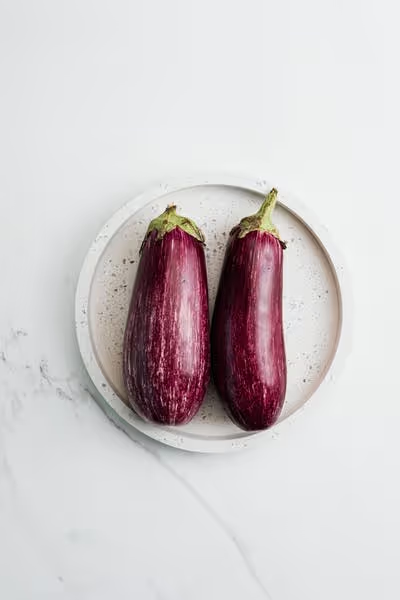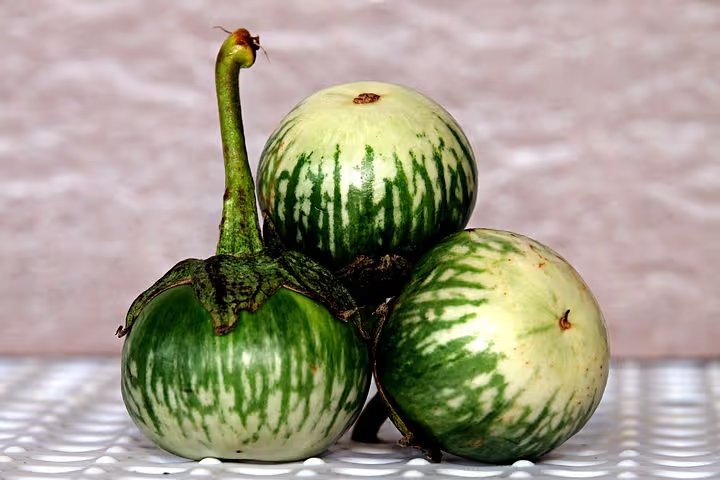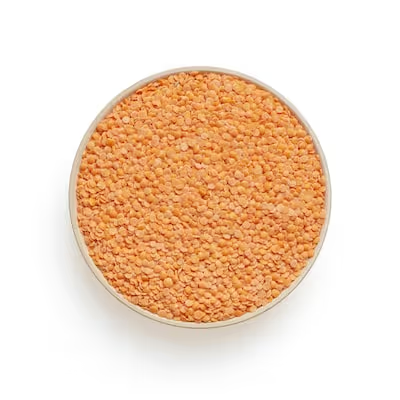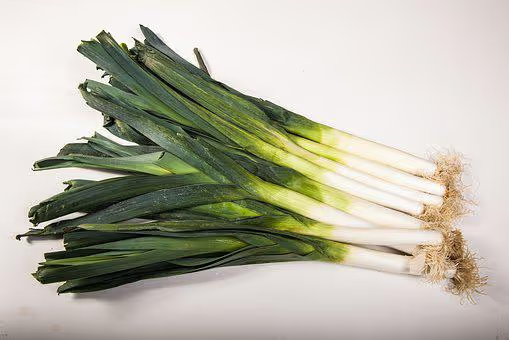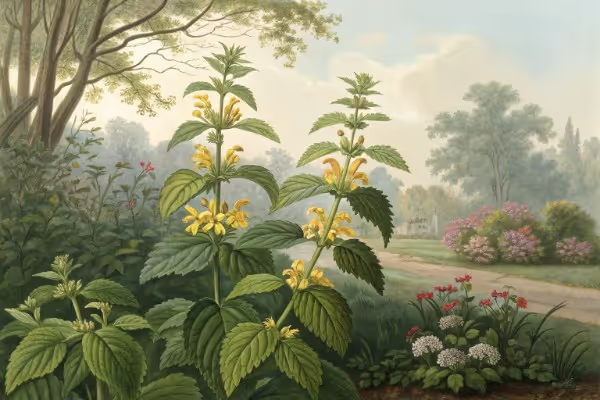Growing Bell Pepper Plants for a Healthy, Flavorful Harvest
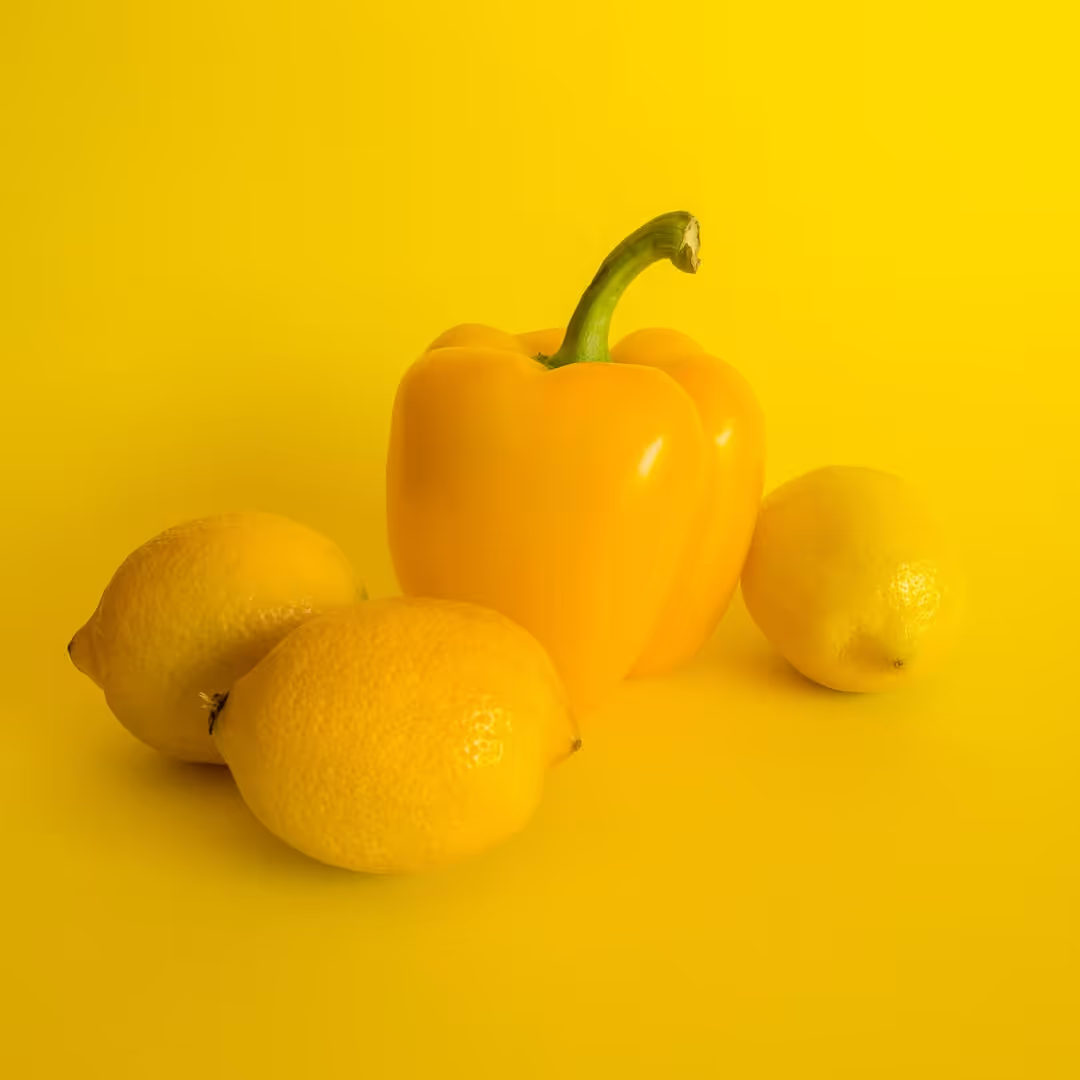
Growing Bell Pepper
Growing bell pepper begins with choosing heat-loving varieties, planting seedlings in rich, sun-soaked soil, and providing consistent watering. Start indoor seeds 6-8 weeks before the final frost date, as bell peppers thrive best at temperatures above 70°F. Follow this guide on growing bell pepper, and soon you'll bite into crisp, colorful peppers plucked fresh from your backyard garden.
Cheatsheet: Bell Pepper Plant Success
🌱 Best Growing Conditions
- Full sun: 6-8 hrs daily
- Soil: 6.0-6.8 pH, rich, drains well
- Temp: 70-85°F (21-29°C) day, 60-70°F (16-21°C) night
- Humidity: 50-70%
🗓️ Sowing & Planting
- Start seeds indoors 8-10 weeks before last frost.
- Transplant seedlings outdoors after soil warms to 60°F (16°C).
- Space plants 18 in (45 cm) apart.
💧 Water & Feed
- Water: 1-1.5 in (2.5-4 cm) per week, keep soil moist
- Feed: Balanced fertilizer at planting, then side-dress with compost mid-season
🌻 Support & Care
- Stake or cage for tall varieties
- Mulch to retain moisture & suppress weeds
- Pinch early flowers for bushier plants
🐛 Pests & Disease
- Avoid wet leaves to prevent fungal issues
- Inspect for aphids, flea beetles, hornworms
- Rotate crops to reduce disease risk
🍽️ Nutrition & Health
- More vitamin C than oranges—boosts immunity
- Rich in antioxidants: lutein, beta-carotene
- Low calorie, high fiber
🌶️ Harvest & Storage
- Cut peppers when firm & full-sized (green or colored)
- Use clean shears or knife, leave 1 in (2.5 cm) stem
- Store fresh up to 2 weeks at 45°F (7°C)
🧰 Tools and Products You'll Need
- Seed trays or pots
- Grow light (for indoor starts)
- Trowel
- Hand pruners
- Compost or slow-release fertilizer
- Mulch
- Plant stakes or cages
- Gloves
-
Growing Bell Pepper: climate, timing, and the flavor payoff
I plant after nights hold above 55 F, 13 C, and soil sits warm at 65 F, 18 C. Fruit sets best when days ride 70 to 85 F, 21 to 29 C, and drop off in heat spikes over 90 F, 32 C.
I learned the hard way that cold nights stunt compact plants for weeks. A cheap low tunnel saved an entire block one spring.
“Peppers are a warm-season crop and very sensitive to cold.” — University of Minnesota Extension
Seed to seedling: start strong
I sow 8 to 10 weeks before last frost in a sterile mix, then use bottom heat. Germination speeds at 80 to 85 F, 27 to 29 C.
“Pepper seed germinates best at 80 to 90 F.” — Penn State Extension
- Light: 14 to 16 hours under LED shop lights at 5 to 8 cm overhead.
- First feed: half-strength fish or kelp once true leaves appear.
- Pot up at 2 to 3 true leaves into 7 to 10 cm cells for thick stems.
- Harden off 7 to 10 days, increasing outdoor time and light daily.
Soil and beds that produce sweet walls
Peppers like a slightly acidic to neutral soil at pH 6.2 to 6.8 with generous organic matter. I blend 2 to 5 cm of compost into the top 15 to 20 cm, then mulch after the first warm-up rain.
In containers, go big. A single plant wants 19 L, 5 gal, minimum with a peat and bark based mix plus perlite for air.
Transplanting, spacing, and airflow
I set plants 45 cm, 18 in, apart with rows 60 to 90 cm, 24 to 36 in. Bury to the original soil line and water in with a seaweed drench to reduce transplant shock.
Root-zone warmth drives early growth. Black plastic or a dark fabric mat boosts soil by 3 to 5 C, 5 to 9 F, in spring.
Water that keeps fruit thick and crack-free
Steady moisture beats heavy drinks. I target 25 to 38 mm, 1 to 1.5 in, per week, split into two or three irrigations.
Drip lines with 2 L per hour emitters, 0.5 gph, reduce foliar disease and save time. A 5 cm, 2 in, straw mulch locks it in.
Feeding without fuss
A soil test sets the plan, always. Preplant, I add a balanced organic fertilizer at label rate and a handful of gypsum if the soil lacks calcium.
At first flower, I side-dress lightly with calcium nitrate or a fish and bone blend, then repeat 3 weeks later. Too much nitrogen pushes leaves and delays ripening.
Training, pruning, and wind-proofing
Stakes or a low cage prevent splits and keep fruit off soil. I run a simple two-stake Florida weave at 30 and 60 cm, 12 and 24 in.
Removing the first “king blossom” can thicken the plant in short seasons. I also thin a few interior suckers on vigorous hybrids for airflow.
Sun, shade, and color
Eight hours of sun makes sugars, and sugars make flavor. During heat waves, a 20 to 30 percent shade cloth saves fruit from sunscald and keeps flowers from aborting.
Green fruit mature 35 to 45 days after bloom. Red, yellow, and orange color up 2 to 3 weeks later and taste markedly sweeter.
Pollination and fruit set quirks
Peppers self-pollinate, but a daily shake of the cage helps in still greenhouses. Heat over 32 C, 90 F, or nights under 13 C, 55 F, can dump blossoms.
A weekly seaweed foliar during stress seems to steady set in my tunnels. It will not fix temperature problems, but it helps plants ride the edge.
Pests and diseases, by symptom and fix
- Aphids, whiteflies, and mites: blast with water, then rotate insecticidal soap and horticultural oil, morning only to spare leaves.
- Thrips and pepper weevil in warm regions: blue or yellow sticky cards for scouting, spinosad when thresholds are met, and tight sanitation.
- Bacterial leaf spot: start with clean seed and resistant cultivars, avoid overhead irrigation, copper only as a last resort within label limits.
- Phytophthora root and crown rot: raised beds, well-drained soils, avoid low spots, and use resistant varieties where available.
- Tobacco mosaic virus: do not smoke around seedlings, wash hands, and discard symptomatic plants promptly.
Most headaches come from wet leaves and compact spacing. Airflow fixes half the problems before they start.
Blossom end rot triage
That black, sunken tip is a calcium delivery issue tied to moisture swings, not a simple deficiency. Keep soil evenly moist and add mulch, then side-dress light calcium.
Foliar calcium helps new fruit only. The damaged fruit will not recover, so harvest and compost it.
Harvest and storage for peak flavor
I cut with pruners to keep stems intact. For bright color, wait until the fruit feels firm and glossy with full shoulder color.
Store at 7 to 10 C, 45 to 50 F, with high humidity for 1 to 2 weeks. Colder storage causes pitting and watery flesh.
“Peppers keep best at 45 to 50 F and 90 to 95 percent relative humidity.” — UC Davis Postharvest Technology Center
Numbers that matter
- Soil pH: 6.2 to 6.8, ideal for nutrient uptake, per multiple university extensions.
- Germination: 80 to 85 F, 27 to 29 C, sprouts in 7 to 10 days, faster with bottom heat.
- Yield target: 8 to 12 large bells per plant in home beds with good fertility and water.
- Nutrition: red bell pepper carries about 127 mg vitamin C per 100 g, over double an orange by weight, USDA FoodData Central.
Top bell pepper varieties, by situation
- Short season, cool nights: King of the North, Ace, Early Sunsation.
- Thick walls, grill friendly: Olympus, Red Knight, Revolution.
- Container friendly, compact habit: Lunchbox Red or Orange, Cute Stuff Red, Mohawk.
- Disease resistance with yield: Aristotle X3R, Paladin for Phytophthora pressure, Admiral for bacterial spot tolerance.
- Color show, sweet crunch: Orange Blaze, Etiuda, Canary Bell.
I rotate at least three years away from tomatoes, potatoes, and eggplant to cut disease carryover. It pays off in clean leaves by August.
Gear that earns its keep in Growing Bell Pepper
- Seed mats or a heat cable for 80 to 85 F, 27 to 29 C, germination.
- LED shop lights, 4000 to 6500 K, with an outlet timer.
- Soil test kit or lab submission before fertilizing.
- Drip kit with 2 L per hour emitters and a simple pressure regulator.
- 20 to 30 percent shade cloth for heat spikes and sunscald prevention.
- Stakes, soft ties, and a small roll of tomato twine for a low weave.
- Mulch: clean straw or a woven polypropylene ground cover for warmth and weed control.
Companions, rotation, and soil life
Basil and onions share space well and do not crowd roots. I skip planting peppers after nightshades for at least three seasons to avoid lingering pathogens.
A thin cover crop of buckwheat before peppers builds structure fast. I mow and tarp it for two weeks, then transplant into a crumbly, living bed.
Season extension and protected culture
Low tunnels add 2 to 4 C, 4 to 7 F, and push peppers two weeks earlier here. I vent early each morning to avoid humidity spikes that trigger leaf spot.
In greenhouses, I run a gentle fan for pollen movement. A midday mist, very light, cools the canopy without soaking leaves.
Chef-grade flavor tips
Peppers sweeten as Brix climbs with color. I leave a few fruit to fully color for salads, then pick the rest green for stir-fries to keep plants setting.
A sprinkle of wood ash in alkaline soils is a mistake, but on acidic ground a light dust can supply potassium. Test first, save yourself the regret.
Quotes worth remembering
“Red bell peppers are richer in vitamin C than citrus by weight.” — USDA FoodData Central
“Bacterial leaf spot survives on seed and residue, so start clean and manage water.” — NC State Extension
FAQ lightning round
Can I prune hard like tomatoes. No, keep leaves to shade fruit and feed the plant.
Will green-picked peppers turn red indoors. Some will color off the plant at 20 to 25 C, 68 to 77 F, but flavor improves most when ripened on the plant.
Why are my peppers bitter. Cold stress, low light, or excess nitrogen can flatten sugars, so fix those before chasing supplements.
Do epsom salts help. Only if a soil test shows low magnesium, otherwise they can unbalance potassium uptake.
My field notes from hot summers and cold springs
Shade cloth at noon saved fruit set during a 38 C, 100 F, week and paid back in heavier, thicker-walled peppers. On a cold spring, a black fabric strip and clear low tunnel pulled the soil to 20 C, 68 F, by mid May and cut transplant shock to nearly nothing.
Each year I trial at least two new cultivars next to a workhorse like California Wonder. The side-by-side tells the truth by August.
Frequently Asked Questions About Growing Bell Pepper Plants
When should I start bell pepper seeds indoors?
Begin planting your bell pepper seeds indoors approximately 8–10 weeks before the last expected frost in your region. They flourish in temperatures between 70–80°F (21–27°C) and emerge healthy and ready for outdoor transplanting once all frost risk subsides.
How often do bell pepper plants require watering?
Watering depends on soil moisture and climate conditions. Aim to water bell pepper plants consistently, providing around 1–2 inches (2.5–5 cm) of water weekly. Check regularly for moist (but never soggy) soil about one inch (2.5 cm) beneath the surface.
What's the optimal spacing for planting bell pepper seedlings outdoors?
Position your seedlings roughly 18–24 inches (45–60 cm) apart, with rows spaced approximately 24–36 inches (60–90 cm). This spacing encourages air circulation, reduces disease risk, and supports healthy plant maturity.
Do bell pepper plants require support structures?
While bell peppers don't inherently demand support, staking or using cages often benefits heavier fruit-bearing varieties. Adding such structures prevents branches from bending or breaking under the plant's weight.
Why are my bell pepper plants flowering but not producing fruit?
Plants flowering without fruit typically point to pollination issues or stress conditions. Ensure steady temperatures within 60–85°F (16–29°C), consistent watering, and sufficient pollinator activity. Gentle shaking or hand-pollinating blooms can encourage successful fruit set.
How long does it take for bell peppers to reach harvesting maturity?
Bell pepper plants usually mature within 60–90 days after transplanting outdoors. Early varieties ripen sooner, while sweet types and color-specific peppers may take longer. Harvest when the peppers reach their characteristic size, shape, and vibrant color for the best flavor profile.
What’s causing small holes or spots on my bell pepper leaves?
Common culprits include pest infestations like aphids, flea beetles, or fungal diseases. Regular plant inspections coupled with proper treatments—such as insecticidal soap or neem oil applications—effectively resolve minor infestations early, keeping foliage clean and healthy.
Growing Bell Pepper plants takes patience, a sharp eye, and a bit of stubbornness—qualities any gardener eventually picks up. The payoff? Crisp peppers that taste like sunlight and rain. Start with rich soil, keep them warm, and never let them thirst. Watch for pests, but don’t baby the plants. Nature rewards the grower who pays attention, not the one who overthinks it.
Mix in companions like cherry tomatoes or eggplant if you crave a patch that’s as colorful as it is productive. In the end, growing bell pepper is about leaning into the seasons, savoring the process, and enjoying the fruits—literally—of honest work. Plant, wait, pick, repeat.
The Money Saver's Guide to Bell Pepper Gardening
Start from Seed, Save Big
Buying bell pepper seedlings costs €4-€6 ($4.50-$6.50) each; seeds average €2 ($2.20) per pack for up to 50 seeds. Early planting under grow lights indoors at 21-27°C (70-80°F) saves significant money.
DIY Recycled Containers
- Reuse plastic yogurt or milk containers with drainage holes drilled at the base.
- Cardboard egg cartons make biodegradable seed starters that transplant directly into soil.
Organic Pest Prevention on a Budget
- Homemade neem oil spray: 1 tablespoon neem oil, ½ teaspoon mild soap, and 1 liter (1 quart) water; spray leaves weekly to deter pests naturally.
- Plant basil and marigolds near peppers; strong scents repel harmful aphids and whiteflies.
Efficient Watering Techniques
- Drip irrigation reduces water use by up to 60% compared to sprinklers.
- Apply straw mulch around plants to retain soil moisture and minimize watering frequency.
Preserving Harvest, Eliminating Waste
Peppers frozen immediately after harvest retain nutrients (vitamins A, C, antioxidants) for up to 12 months. Dehydrate excess bell peppers at 57°C (135°F) for 8-12 hours, extending shelf life dramatically.
Save Your Own Seeds for Next Season
Dry mature seeds on paper towels; store in airtight containers. Seeds stay viable for up to 3 years, slashing future gardening expenses.
Find out which plants will thrive in your garden!
Answer a few fun questions and get custom plant recommendations perfect for your space. Let’s grow something amazing together!

start your season
